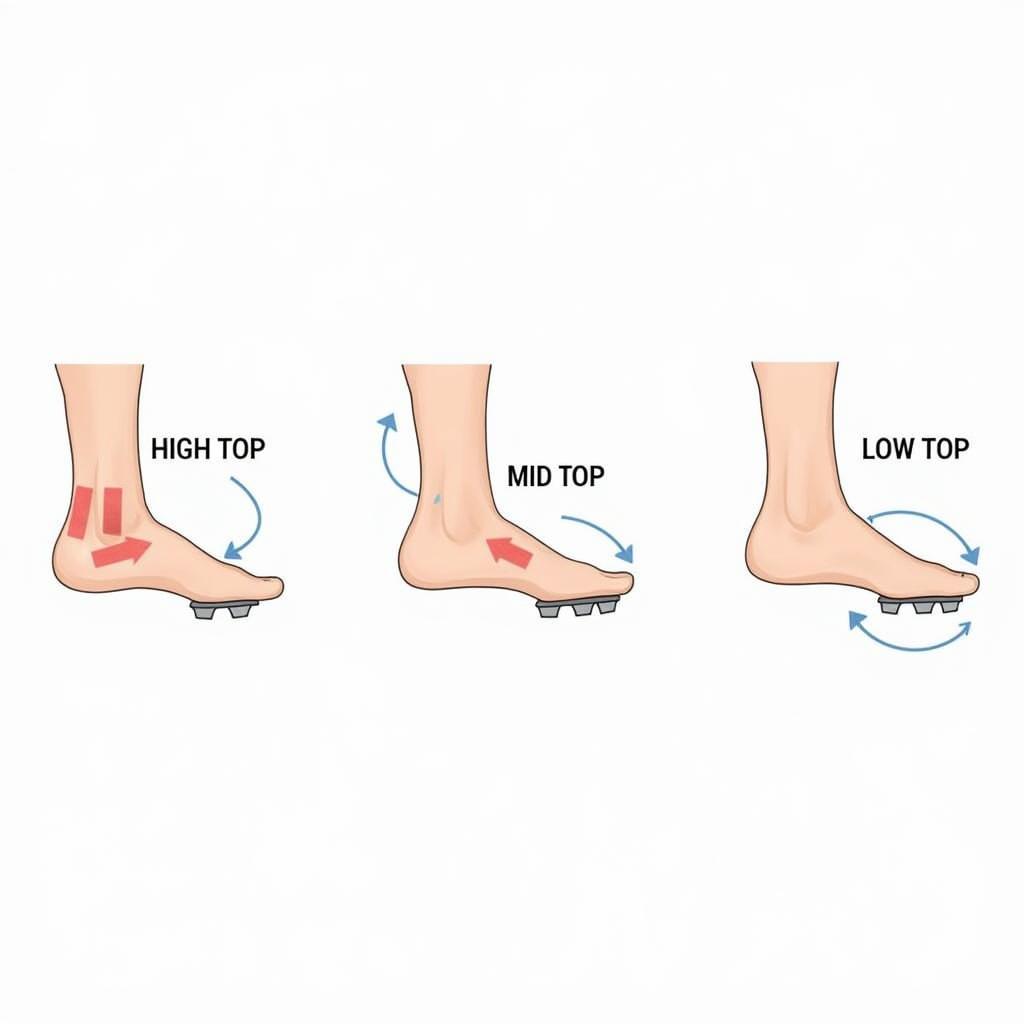Baseball Catcher Cleats: The Ultimate Guide to Choosing the Right Pair
October 19, 2024When it comes to baseball, having the right gear can make all the difference in your performance. And for catchers, who play such a demanding position, that’s especially true for your cleats. Choosing the right pair of Baseball Catcher Cleats can improve your stability, agility, and overall comfort throughout the game.
 Different Types of Baseball Catcher Cleats
Different Types of Baseball Catcher Cleats
Understanding Baseball Catcher Cleats
Unlike other positions, catchers spend a lot of time in a crouched stance, putting extra stress on their feet and ankles. They also need to move quickly in various directions, from side to side to block pitches in the dirt to lunging forward to throw out a runner stealing second.
That’s why baseball catcher cleats are designed differently from regular cleats. They offer features that cater to the specific demands of the catcher position.
Key Features to Consider
When shopping for baseball catcher cleats, keep the following factors in mind:
1. Type of Cleats
-
Metal Cleats: These cleats provide the best traction and stability on natural grass fields. They are ideal for experienced catchers playing at higher levels. However, metal cleats can be heavier and are typically not allowed in youth leagues.
-
Molded Cleats: Made from rubber or plastic, molded cleats are versatile and suitable for use on various surfaces. They provide good traction and comfort, making them an excellent choice for catchers of all levels.
-
Turf Shoes: These shoes have small rubber studs and are specifically designed for artificial turf fields. While not ideal for catching on natural grass, they offer excellent grip and comfort on turf.
2. Ankle Support
-
High-Top Cleats: These cleats offer excellent ankle support, which is essential for catchers who are constantly squatting and moving laterally. The higher cut helps prevent ankle sprains and provides added stability.
-
Mid-Top Cleats: A balance between support and flexibility, mid-top cleats offer decent ankle support without restricting movement as much as high-tops.
-
Low-Top Cleats: These cleats provide the most flexibility and are preferred by players who prioritize agility and speed. However, they offer the least amount of ankle support.
 Choosing the Right Ankle Support for Baseball Catcher Cleats
Choosing the Right Ankle Support for Baseball Catcher Cleats
3. Fit and Comfort
-
Proper Sizing: Ensure your cleats fit snugly but not too tight. There should be about a thumb’s width of space between your longest toe and the end of the shoe.
-
Breathability: Choose cleats made from breathable materials like mesh or synthetic leather to keep your feet cool and dry during long games.
-
Cushioning: Look for cleats with ample cushioning in the insole and midsole to absorb shock and reduce stress on your feet.
4. Durability
-
Material Quality: Opt for cleats made from high-quality materials like durable synthetic leather or mesh. Reinforced stitching and toe caps can also enhance durability.
-
Cleat Durability: Metal cleats should have sturdy, replaceable spikes. For molded cleats, check for deep, well-spaced studs that provide long-lasting traction.
Choosing the Right Cleats for Your Playing Level
Your playing level can greatly influence the type of cleats that are most suitable for you.
-
Youth Players: Molded cleats are generally recommended for young players as they provide good traction and comfort without the risks associated with metal cleats.
-
High School Players: As players become more experienced and start playing on regulation-size fields, they can consider transitioning to metal cleats for increased traction and stability.
-
College and Professional Players: At this level, metal cleats are the standard, offering the best performance advantages. Players may also opt for specialized cleats designed for specific positions, such as catcher’s cleats.
Tips for Breaking In Your New Cleats
- Gradual Wear: Start by wearing your new cleats for short periods around the house to break them in gradually.
- Sock Use: Wear the same type of socks you plan to wear during games to ensure a proper fit.
- Moisture Control: Keep your feet dry by using moisture-wicking socks and allowing your cleats to air out after each use.
FAQs
Q: Can I wear soccer cleats for catching?
A: While soccer cleats share some similarities with baseball cleats, they lack the toe cleat and specialized support required for catchers. It’s best to stick with cleats designed specifically for baseball.
Q: How often should I replace my catcher’s cleats?
A: Replace your cleats when the studs show significant wear, the cushioning feels compressed, or you experience discomfort or pain while wearing them.
Conclusion
Selecting the right baseball catcher cleats is crucial for maximizing performance and preventing injuries. Consider the type of cleats, ankle support, fit, durability, and your playing level when making your choice. By investing in a quality pair of cleats and following proper care guidelines, you can enhance your comfort, stability, and overall performance behind the plate. And if you’re looking for other essential baseball gear, be sure to check out our recommendations for the best catcher bag and the baseball coach jersey.
Remember, finding the perfect pair of cleats is a personal journey, so take your time, try different options, and choose what feels best for you. And for those interested in exploring other aspects of the game, our article on white marsh baseball offers a unique perspective on the sport.
For all your baseball needs and expert advice, feel free to reach out to us. Contact our 24/7 customer support team at Phone Number: 0963418788, Email: [email protected], or visit us at 2M4H+PMH, Phường Nghĩa Thành, Gia Nghĩa, Đắk Nông, Việt Nam. We’re here to help you elevate your game to the next level.